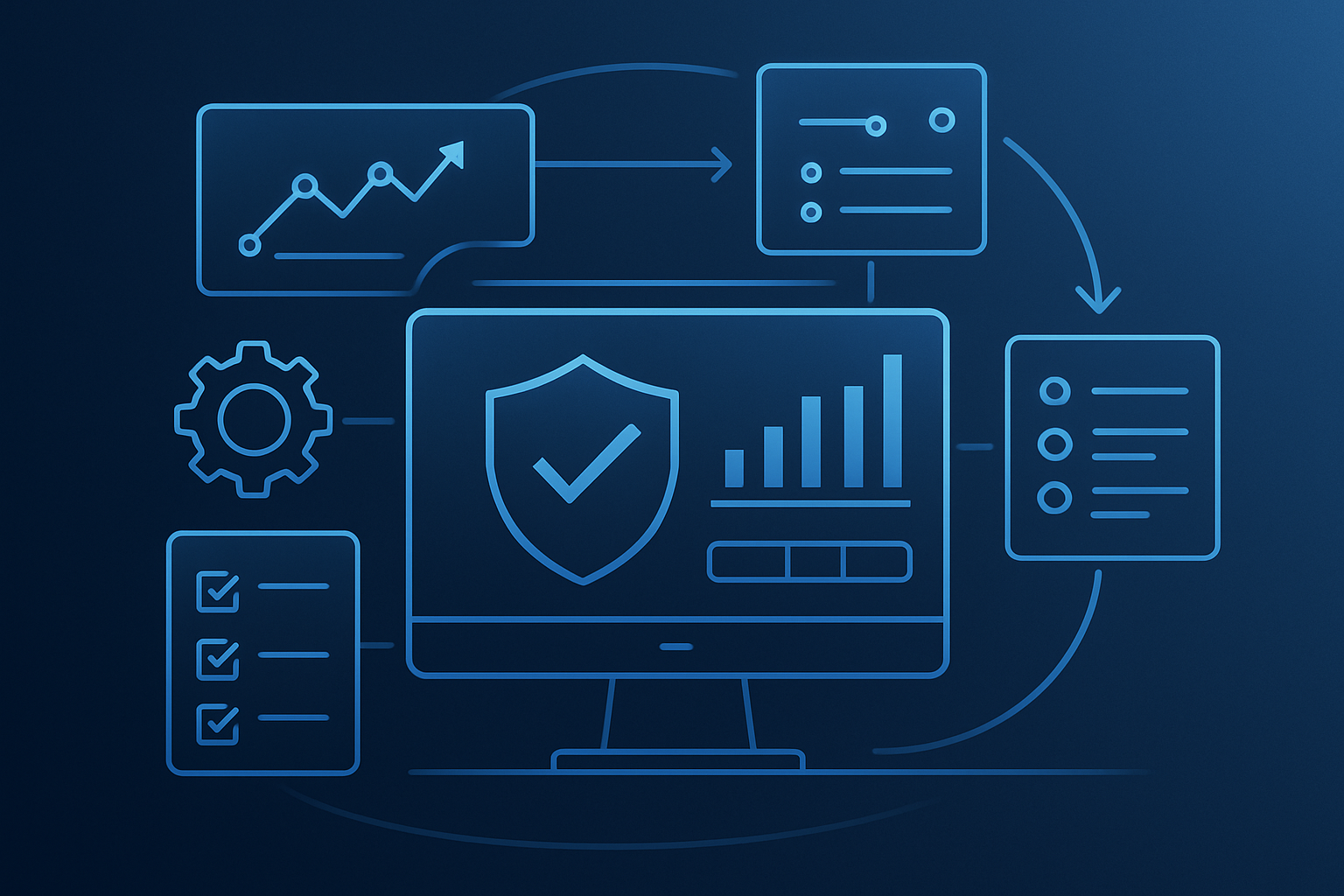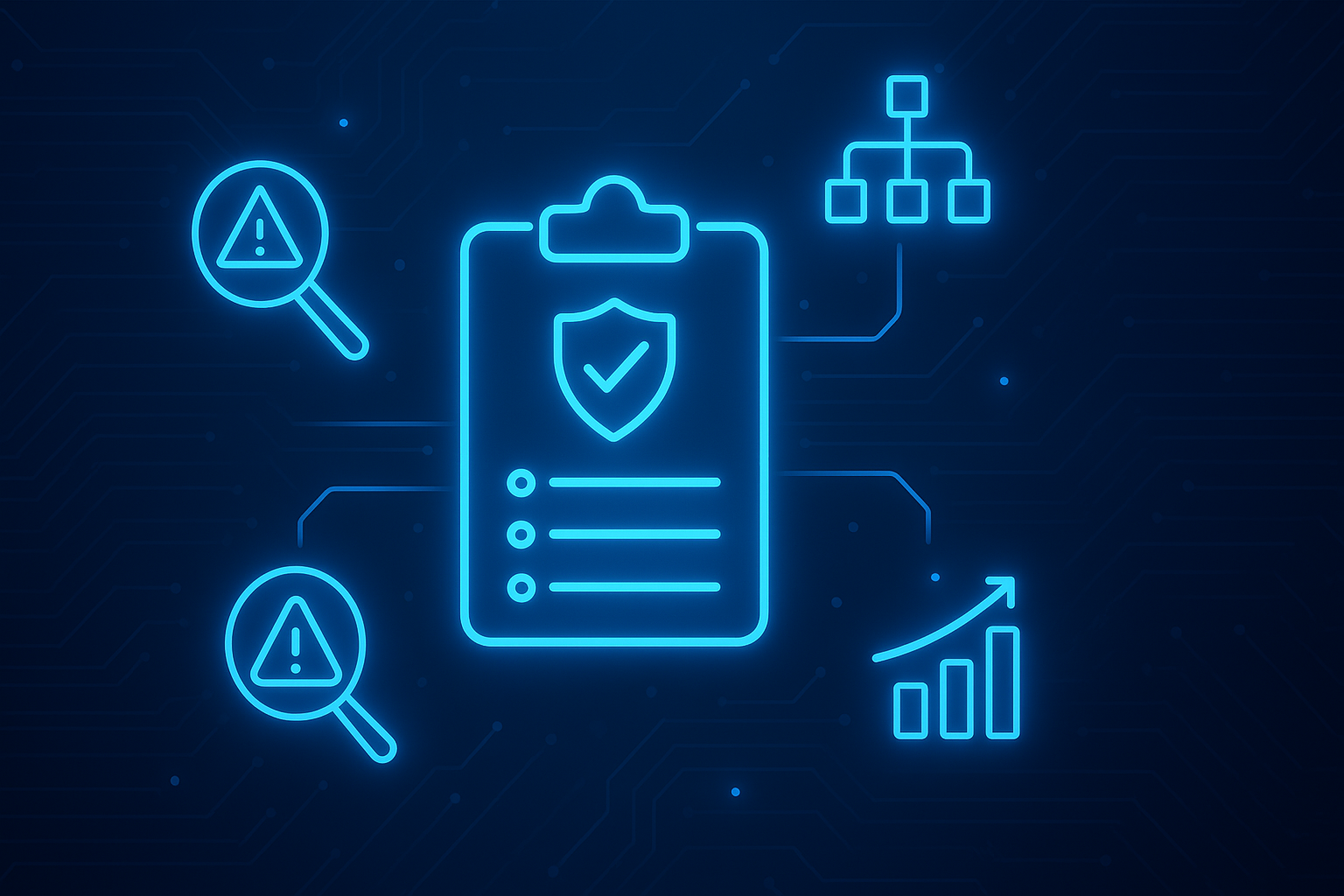What is ISO 27001?
ISO/IEC 27001 is an international standard that defines best practices for Information Security Management Systems (ISMS) organizations to demonstrate their approach to data security and privacy. It's a detailed specification for safeguarding and keeping your data while adhering to confidentiality, integrity, and availability standards.
The ISO framework provides a set of controls that may be tailored to your organization's specific risks and executed systematically to ensure externally assessed and certified compliance.
Combining other frameworks, like NIST CSF and NIST RMF (Risk Management Framework), can also enhance compliance with ISO 27001 controls.
How to Implement ISO 27001
ISO 27001 can be essential in systematizing cybersecurity measures to address specific scenarios or compliance requirements, thereby developing full-fledged information security management systems (ISMS). A third-party auditor can also obtain official ISO 27001 certification.
ISO 27001, like the NIST CSF, does not advocate for specific procedures or solutions. Still, its framework provides more information on security controls than NIST, and it works in tandem with the 2019 ISO/IEC TS 27008 updates on emerging cybersecurity risks. An operationally mature firm, such as one that has already achieved ISO 9001 compliance or certification, may be ready to handle ISO 27001.
Differences & Similarities Between NIST and ISO 27001
NIST CSF and ISO 27001 provide solid frameworks for cybersecurity risk management. The ISO 27001 standards and the NIST CSF framework are straightforward to integrate for a business seeking to become ISO 27001 compliant.
Their control measures are comparable, and their definitions and codes are interchangeable. Both frameworks provide a basic vocabulary that allows interdisciplinary teams and external stakeholders to communicate coherently about cybersecurity challenges. However, a few essential distinctions exist between NIST CSF and ISO 27001, including risk maturity, certification, and cost.
Risk Maturity
ISO 27001 is an excellent choice for operationally mature enterprises seeking certification. In contrast, NIST CSF is a good choice for organizations just starting to establish a cybersecurity risk management plan, understand the security aspects of business continuity, or try to remediate earlier failures or data breaches.
Certification
ISO 27001 provides a globally recognized certification through a third-party audit, which can be costly but improves your organization's reputation as a trustworthy corporation. Such a certificate is not available via the NIST CSF.
Costs
Another reason a startup might start with the NIST CSF and subsequently scale up with ISO 27001 is that the NIST CSF is freely accessible, whereas ISO 27001 requires a fee to access its documents.
Pros and Cons Of NIST and ISO 27001
Pros and Cons of NIST CSF
| Aspect | Pros | Cons |
|---|---|---|
| Flexibility and Adaptability | Easily customizable for organizations of any size, industry, or maturity level. | Lack of prescriptive controls can make implementation difficult without additional guidance. |
| Comprehensive Coverage | Covers the full cybersecurity lifecycle through its five core functions | A broad scope may overwhelm organizations just starting their cybersecurity programs. |
| Risk-Based Approach | Prioritizes cybersecurity efforts based on business risk and impact, promoting efficient allocation of resources. | Requires a mature understanding of risk management to be fully effective. |
| Alignment with Other Frameworks | Integrates well with standards like ISO 27001, CIS Controls, and NIST SP 800-53, promoting unified security management. | Mapping and maintaining alignment across multiple frameworks can become complex without automation. |
| Improved Communication and Reporting | Bridges technical and executive communication by framing cyber risk in business terms. | Since there is no certification path, external validation and benchmarking depend on the rigor of internal assessment. |
Pros and Cons of ISO 27001
| Aspect | Pros | Cons |
|---|---|---|
| Global Recognition | An internationally accepted standard that demonstrates strong information security management practices. | Achieving certification can be lengthy and costly, especially for smaller organizations. |
| Structured Framework | Provides a systematic, risk-based approach to managing information security. | It can feel rigid and overly process-driven if not tailored to the organization’s context. |
| Continuous Improvement | Encourages ongoing assessment and enhancement of security controls. | Maintaining compliance requires continuous documentation, monitoring, and audits. |
| Risk Management Alignment | Aligns well with other frameworks, such as NIST CSF, and supports integration with enterprise risk management. | Risk assessment requirements can be complex for organizations without mature risk programs. |
| Business and Customer Trust | Boosts credibility with stakeholders, partners, and customers through third-party certification. | Focuses more on management systems than on technical cybersecurity controls. |
How Much Does It Cost To Implement ISO 27001 and NIST?
NIST CSF is available for free. You can implement it at your leisure and your own expense.
On the other hand, since ISO 27001 requires extensive certification audits, the cost is much higher. Organizations must also conduct surveillance audits during the first two years of their ISO cyber standards certification and perform a recertification audit in the third year.
As a result, most companies begin with NIST and progress to ISO 27001 as their business expands.
Which Framework Is Right For Your Organization?
What's best for your company ultimately relies on its maturity, goals, and unique risk management requirements.
ISO 27001 is an excellent solution for operationally mature enterprises facing external cybersecurity certification demands. However, you may not be ready to commit to an ISO 27001 certification, and a NIST-based approach, with its explicit cyber risk assessment template, might be more beneficial.
Before establishing and implementing stricter cybersecurity measures and controls, you should conduct an NIST audit to assess your firm's performance.
Your security strategy may combine the two frameworks as your company grows; for example, adopting the NIST CSF framework can help you prepare for ISO 27001 certification. Moreover, growing businesses can use the NIST CSF to build their risk assessment capabilities.
Wrapping Up
With the increased adoption of NIST CSF, more small and medium-sized firms are expected to work on their compliance. So, the decision isn't actually between ISO 27001 and NIST CSF. It's more a question of how your company will use the certificates.
ISO 27001 accreditation certifies that your company follows information security best practices and provides an impartial, professional assessment of whether or not your personal and sensitive data is effectively safeguarded.
CyberStrong automates vendor attestations, such as SOC 2 and ISO 27001, to automatically score controls, enrich profiles with benchmarking data, and update risk posture in real-time, providing clarity across your vendor ecosystem.
Contact us to learn more about automated cyber risk management and compliance capabilities that will advance your company.
NIS2 is a growing requirement for organizations of all sizes and maturity. Get the latest insights on the NIS2 Directive Resources.





.png)
.png)
.png)
%201.png)
.png)





